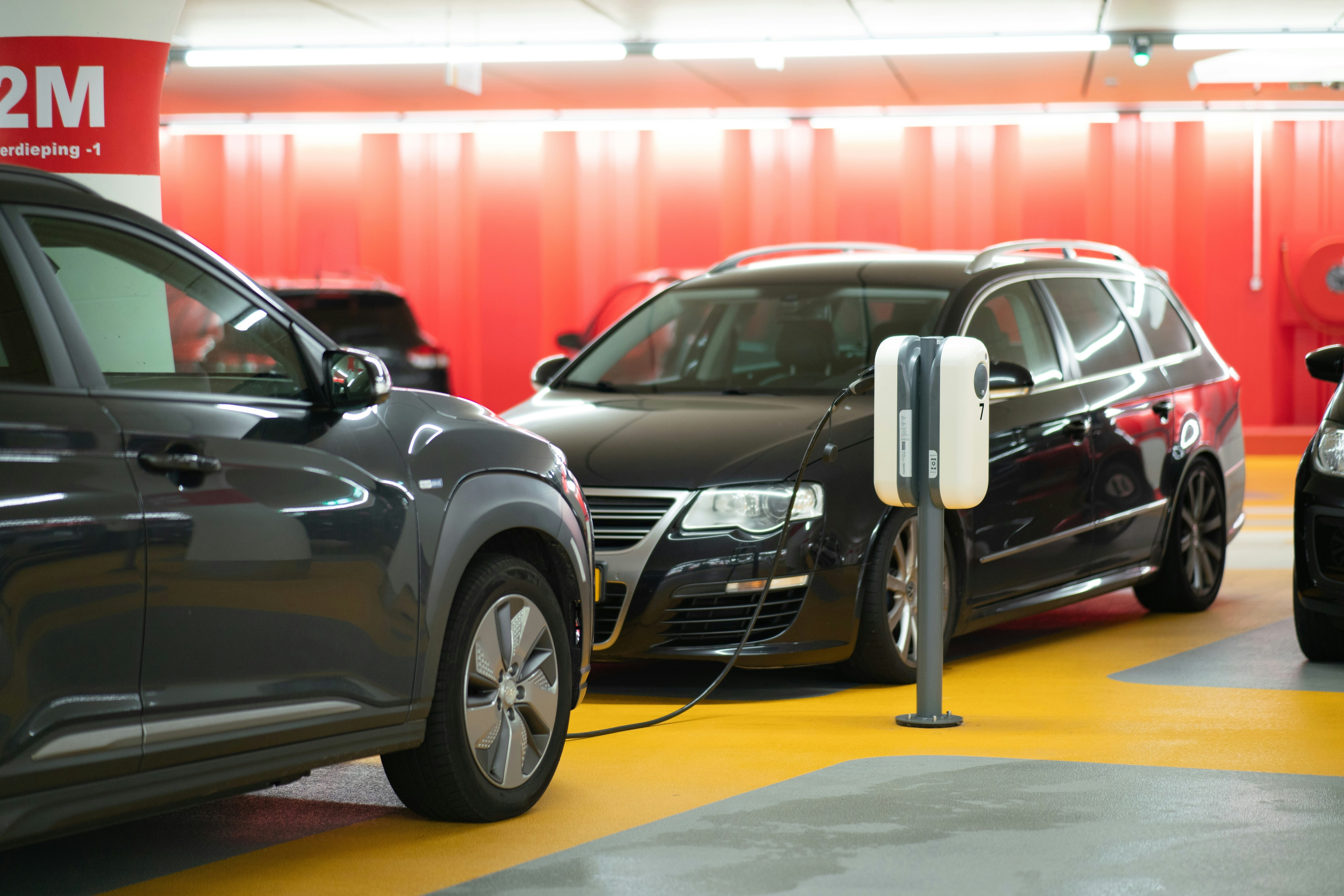World Bank: 4 ways we can make the most of electric mobility

World Bank outlines four ways in which we can make the most of electric mobility Image: REUTERS/Mark Blinch
- The transport sector already accounts for more than one-quarter of energy-related emissions.
- Electric mobility provides a sustainable alternative, that can help countries achieve sustainable development objectives and decarbonization goals.
- The World Bank outlines four ways in which we can make the most of it.
The need for electric mobility
The transport sector already accounts for more than one-quarter of energy-related greenhouse gas (GHG) emissions—a figure projected to double by 2050 if left unabated. To avoid this scenario, governments worldwide are considering ambitious steps to curb transport emissions and help achieve the goals of the Paris Agreement. As we head toward COP26, we see more and more powerful narratives emerging around the ‘right pathways’ to decarbonizing transport. On the one hand, many high-income countries have been promoting electric vehicles as the most promising way to decarbonize transport. On the other hand, one may wonder how this model would apply to developing countries when more than 50 percent of the population in Sub-Saharan Africa does not even have access to basic electricity for cooking or lighting.
So, can electric mobility transform transport and help countries achieve sustainable development objectives and decarbonization goals? Are policy makers adequately equipped to make the right decisions for sustainable outcomes on e-mobility?
These questions are at the heart of new study on Sustainable Electric Mobility: Building Blocks and Policy Recommendations. The report provides policy recommendations to decision-makers at the global, national, and local levels of governance to facilitate a coherent and locally appropriate public policy framework to catalyze sustainable electric mobility. Commissioned by Sustainable Mobility for All (SuM4All), the study was produced by SuM4All and a group of experts led by the Transformative Urban Mobility Initiative (TUMI) and the International Association of Public Transport (UITP).
“The study is part of an overall effort undertaken by the Sustainable Mobility for All partnership to deep-dive on some of the most complex issues in transport and to come up with actionable guidance on policies to achieve sustainable mobility,” said Dr Nancy Vandycke, program manager of SuM4All, during the virtual launch of the report last week. “It will be complemented by two other reports, coming out shortly, as part of the GRA in Action Series: the Digital toolkit for Energy and Mobility to be released on June 16, and a paper for COP26 which will capture the voices of the South on the e-mobility question,” she said.
During the event, a panel moderated by John Graham, Principal Industry Specialist at the International Finance Corporation (IFC), focused on how the transport community and stakeholders can accelerate the development of sustainable electric mobility.
Sustainable Electric Mobility: key takeaways
Here are four things we took away from the discussion:
1. E-Mobility is more than the electric car
All transport modes must be considered for feasibility when implementing e-mobility solutions. In some circumstances, e-mobility is a powerful tool to shift toward cheaper and more efficient modes—for instance, from cars to e-bikes and e-buses—and increase access to opportunities for many. Colin McKerracher, Head of Advanced Transport at Bloomberg New Energy Finance underlined this with current data. “Today, already 16% of the global bus fleet is electric (500.000 units) and electric 2-3 wheelers make up the biggest share of electric vehicles globally, with a total fleet of 190 million vehicles (excluding e-bikes)”. In order to maximize the potential of electric mobility, policy must capture the potentially great benefits of all different modes.
2. We cannot afford to leave developing countries behind
We cannot solve the challenge of transport emissions by creating a situation where the wealthiest countries embrace sustainable electric mobility for their own population while they continue to export old, polluting vehicles across emerging markets. “If you look at the Paris Agreement, the internal combustion engine is incompatible with the future we are obliged to create,” said Monica Araya, Transport Lead at the Climate Works Foundation/Global Drive Electric Campaign. She strongly advocated for developing countries to leverage ‘made in the south innovations’, highlighting Chile’s success in electrifying buses through smart thinking around finance. “The turning point was the bus company and the utility defined a model that nobody had done before by creating a leasing program that eliminated the financial burden from operators,” she highlighted. This resonated with Nyaga Kebuchi, Director of Sustainable Transport Africa, who outlined the value of pilot projects and their ability to serve as keys to unlock doors in developing countries. “It has proven to be an eye-opening experience for several stakeholders,” he said, highlighting the recent deployment of electric micro mobility solutions in Kenya and Uganda.
3. We must continue to harness economies of scale to drive down costs
Over the past few years, global prices of batteries have been reducing as production ramps up. “Every time [producers] double the volume of lithium-ion batteries produced in the world, you get about an 18 percent reduction in cost,” Colin McKerracher pointed out. He highlighted that costs are expected to continue to go down in the next 5 to 6 years, but also stressed the importance of looking at the total cost of ownership, including long-term recycling and disposal costs.
4. A cross sectoral policy approach to electric mobility is imperative
Maximizing the climate benefits of electric mobility requires collaboration and coherent policymaking across sectors: transport policies should support sustainable modes, the energy sector must work to provide cleaner electricity sources, and urban development must promote compact cities that reduce the need for unnecessary travel. “This is a multisector story, and we need to look at that – coordination is critical,” outlined Ivan Jacques, Senior Energy Specialist at the World Bank.
There is no doubt that electric mobility is here to stay. If we get it right, electrification has potential to become a game changer for the transport sector and could go a long way in the transition toward green, safe, accessible, and efficient mobility for all.
Don't miss any update on this topic
Create a free account and access your personalized content collection with our latest publications and analyses.
License and Republishing
World Economic Forum articles may be republished in accordance with the Creative Commons Attribution-NonCommercial-NoDerivatives 4.0 International Public License, and in accordance with our Terms of Use.
The views expressed in this article are those of the author alone and not the World Economic Forum.
Stay up to date:
Energy Transition
Related topics:
Forum Stories newsletter
Bringing you weekly curated insights and analysis on the global issues that matter.
More on Climate Action and Waste Reduction See all
December 22, 2025






